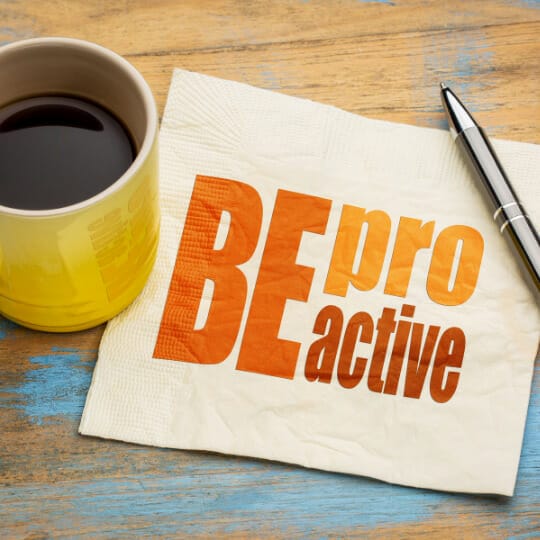
Have you ever wondered what it takes to get motivated and in the right headspace to commit to and complete a transformation challenge or program? Have you ever started a program and not been able to finish it, and feel really bummed about that?
I hear you! In this episode, I want to share with you a journey that I’m about to embark on to improve my mental health and sleep.
I’ve developed a holistic program that I’m calling “physically and mentally stronger”.
And in this episode, I want to share with you how I am getting into the right mindset and how I’m preparing to absolutely smash the next 50 days.
In the coming weeks, I’m going to share what’s going on and what it feels like to be on this journey. I’m going to share all of the blood, sweat and years with you so you can see which of my hacks and methods are working, and my secrets for staying on track.
Over the past 25 years, I have worked as a personal trainer, as a nutrition coach, and as a health coach. I’ve participated in countless challenges and programs, but there aren’t many that I’ve completed. And I know a lot of other people in this same boat.
It tends to happen that when spring comes around people feel motivated to get outside and to shed a few winter kilos or to get out of the winter slump and re-energise themselves or lose weight or whatever it is.
But the reality of a busy life often gets in the way and it’s easy to slide back into old habits and give up on that program or challenge or whatever it is.
As I mentioned in a recent episode, I have been trying to hack my sleep and anxiety that have come about as a result of many stressors in the last 2 years but also with the onset of perimenopause. It’s been a really trying time and my productivity is down, my energy is down, and my mood has been low. I’ve woken up a few times feeling really anxious in the night with a tight chest.
So over the past couple of months, I’ve been hacking a few different parts of my life to reduce these symptoms and get things back into balance, I feel like it hasn’t quite been enough and I want to do a more complete and holistic program that will get me some results and get my health and physiology back on track.
But I didn’t want this to be one of those programs that I would start and then never complete. I didn’t want to feel pressured to flog myself at the expense of my health and my sanity. I didn’t want to feel pushed, restricted, or overtrained.
Speaking with a friend today, she said she’d hit ‘rock bottom’ and it gave her the impetus to make some changes and stick with them.
Then I thought – why is it that we have to wait until we are at rock bottom before we act? That gives us so much more shit to push uphill!!
I’ve decided to be proactive and start something now, and create the commitment to it.
Since I have the qualifications, skills and experience, I decided to come up with my own program and commit to doing it for a period of time that I felt was reasonable and that would yield results.
Given my past experience with this sort of thing, including some successes, I knew I had to make sure that I was 100% committed and that my commitment was foolproof.
How on earth do you do that?
That’s what I’m going to explain – my three-step formula.

The most important thing for starting any program is to have a really clear plan of exactly what you are going to do and when.
That might sound like a bit of a no-brainer, but there is a nuance here.
How often have you gotten a plan that somebody has written for you and tried to copy, but has lost interest or found out it was too hard or not doable for you or didn’t get any results?
I have seen this countless times and so the important thing about making a plan is that it’s customised to you.
Here are three steps for getting your plan right.
Decide exactly what you are going to change. Be very specific.
For example, instead of saying I’m going to exercise each day, I’m going to say exactly what the exercise is, and what time I’m going to do it.
And not just that, but I have scoped my calendar in advance to make sure I’m choosing days and times that are absolutely realistic, blocked out for myself, and most likely to succeed.
I also have a plan B in case any of those times don’t work out.
Be selective
This one is really important. You can’t change everything at once. Studies show that the likelihood is that you can automate around 2 – 3 habits in 12 weeks.
So I’m not trying to change everything dramatically, I am choosing a couple of things that are new habits and a couple of things that are improvements to existing habits.
Another point about being selective is that you need to choose activities that you absolutely 100% can commit to. For example, there’s no way I’m going to get up at 6 a.m. and run 5km. No way. So that’s not even on my agenda.
I am going to walk for 30 minutes each morning, and do 30 minutes of weights and stretching every afternoon.

This is a stretch for me but I have done it easily before so I know that I can do it again. Remember I’ve blocked this out in my calendar so that it’s not negotiable.
Make it foolproof
The third step is to make your chosen activities foolproof. What I mean by this is to write down all of the excuses that your brain is going to come up with when it comes time to do that activity and work out how you will counteract them.
For example, I know that when it comes to exercise it’s going to be too cold or I’m too tired or I’m too hungry or I’m too busy and all of those other really good reasons that my brain is coming up with in the moment. I have a plan for all of those things. It’s foolproof.
Now you might think that making a plan is enough. And this is a mistake that a lot of people make.
A plan is definitely important, but unless you have some good motivators behind the plan, you’ll probably give up by about the 2nd or 3rd day.
It’s great to think about your motivators from a really broad and deep perspective. For example, I know that bone health and healthy aging and so on are really important to me.
I know that I want to reduce anxiety and insomnia.
But in a recent session with my coach, I realised that these weren’t motivating enough for me. I had to come up with another three or four very important reasons why I would do this challenge and complete it no matter what. Many of those reasons are intrinsic – important to me – but some are also extrinsic – beneficial for others.

For some people, one or two reasons might be enough, but I’ve realised that I need to have a lot of reasons to really commit to something like this, and feel like it is worth the effort.
The third step that I want to talk about is what I’m calling the ‘terms and conditions’.
This is like my contract with myself, outlining what I want to do and how.
For example, I am not naturally a journaler but I feel it’s important to document certain things every day to keep me focused and to help me identify when or where I need to course-correct. I will also be visualising and rehearsing the steps I have committed to each day. I will use positive and supportive language. I commit to not complain or make negative or unhelpful comments to myself or about my plan.
I will recognise that it’s hard on some days, and easy on others, and that’s ok and it’s part of the journey.
All of this mental stuff is so important to me because I am someone who may not take the time to reflect on or celebrate my successes or my commitment to the process. So, it’s really important to record specific metrics each day to show that I am firstly taking action every day and secondly that I am checking in with my motivators, and my mindset, to ensure that what I’m doing is meeting my expectations.
Part of this recording of progress is going to be the recording of physiological changes in my body. I am using the Philia Labs system that monitors a specific part of the stress cycle, to inform me of how my chronic stress is tracking and also, to predict when my mental health, productivity or focus is likely to shift, so I can realign my day and use strategies to boost my mood and wellbeing. For me, this is a critical part of staying on track.
And the last part of my terms and conditions is about my expectations.
In terms of expectations, the only one I have is that I will learn how to persist with a process and follow through until completion.
At the very least I will learn something about myself and build trust in myself. At the most, I will also achieve some outcomes.
I’m about to start a 50-day journey to improve my physiological, physical and psychological health.
Despite being a natural-born quitter in the past, I am using all of the qualifications, skills, and experience I have to commit to a program I have devised and follow it for 50 days, no matter what.
Why wait until you hit rock bottom? Be proactive and start now, because it will be way easier, more positive and more enjoyable.
Today, I shared my own three-step process to make this journey foolproof.
I have created a plan that suits me specifically.
I have identified the whys behind it – and I need several immediate ones to help me commit.
I have devised terms and conditions to help me stick with it no matter what.
Hopefully, this has inspired you to think about what it takes for you to change and… to get on and do it.
Listen in next time and let’s see how I’m going with it!
Understanding who you are and what you need will allow your business to thrive! If you’re truly ready to break old habits and get out of the rut I encourage you to check out the Habitology membership.
Learn more here:
© 2024 Melanie White